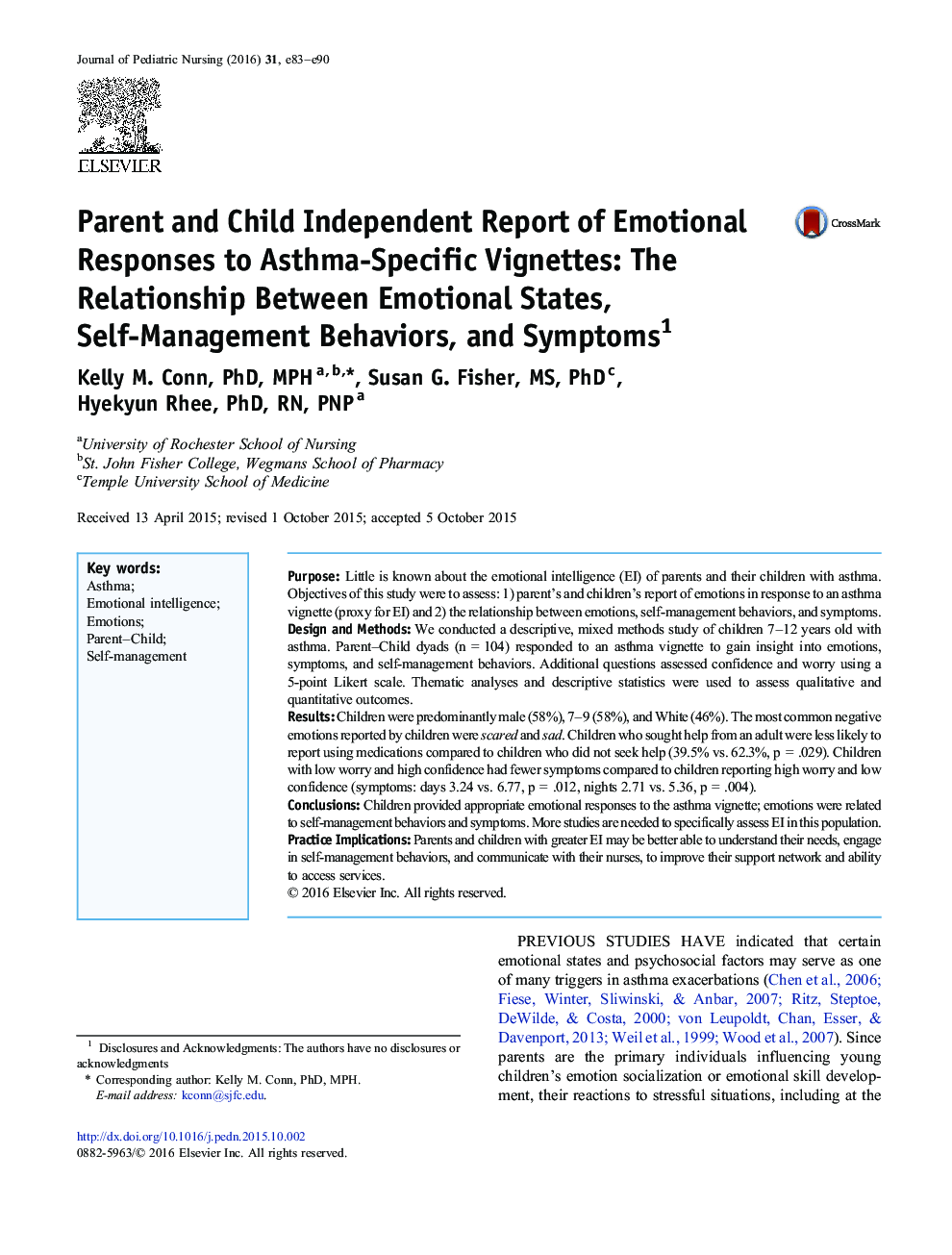| کد مقاله | کد نشریه | سال انتشار | مقاله انگلیسی | نسخه تمام متن |
|---|---|---|---|---|
| 2664108 | 1140623 | 2016 | 8 صفحه PDF | دانلود رایگان |
• Parent–Child dyads were interviewed and reported on their emotions related to an asthma vignette
• Children with low worry and high confidence, had fewer parent-reported asthma symptoms
• Nurses' greater understanding of patients' EI, the ability to understand, process, and monitor emotions, may help them to work with their patients on self-management behaviors
PurposeLittle is known about the emotional intelligence (EI) of parents and their children with asthma. Objectives of this study were to assess: 1) parent's and children's report of emotions in response to an asthma vignette (proxy for EI) and 2) the relationship between emotions, self-management behaviors, and symptoms.Design and MethodsWe conducted a descriptive, mixed methods study of children 7–12 years old with asthma. Parent–Child dyads (n = 104) responded to an asthma vignette to gain insight into emotions, symptoms, and self-management behaviors. Additional questions assessed confidence and worry using a 5-point Likert scale. Thematic analyses and descriptive statistics were used to assess qualitative and quantitative outcomes.ResultsChildren were predominantly male (58%), 7–9 (58%), and White (46%). The most common negative emotions reported by children were scared and sad. Children who sought help from an adult were less likely to report using medications compared to children who did not seek help (39.5% vs. 62.3%, p = .029). Children with low worry and high confidence had fewer symptoms compared to children reporting high worry and low confidence (symptoms: days 3.24 vs. 6.77, p = .012, nights 2.71 vs. 5.36, p = .004).ConclusionsChildren provided appropriate emotional responses to the asthma vignette; emotions were related to self-management behaviors and symptoms. More studies are needed to specifically assess EI in this population.Practice ImplicationsParents and children with greater EI may be better able to understand their needs, engage in self-management behaviors, and communicate with their nurses, to improve their support network and ability to access services.
Journal: Journal of Pediatric Nursing - Volume 31, Issue 2, March–April 2016, Pages e83–e90
